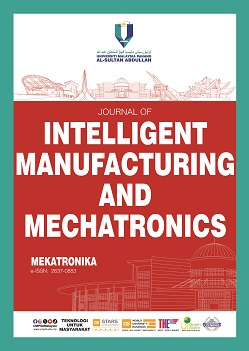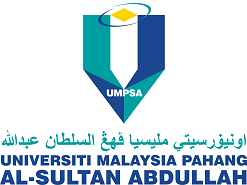Effective Maintenance of Aircraft Antiskid Brake System
DOI:
https://doi.org/10.15282/mekatronika.v6i1.9978Keywords:
Mean Time to Repair, operational data, aircraft, bending endurance, contact endurance, antiskid brake UA-51Abstract
The most effective way to reduce Mean Time to Repair (MTR) is to get to the root cause of the failure before it even occurs. Closely monitoring operational data of each component of an aircraft enables the early detection of possible causes of failure. The purpose of this research work is to determine the cause of the frequent failure of the antiskid brake UA-51, using the data collected on the performance of the component, with the aim of improving on the maintenance process. A close examination of the antiskid brake system showed that the failures occurred due to wear and tear of the drive gear. The external condition of the brake was examined and a calculation was done to ascertain the hardness of the gear teeth. The results of the calculation are presented in the work. Based on the results, it was discovered that the wear and tear of the drive gear was caused by negligence of the technical procedure for carrying out maintenance on the antiskid brake system. A recommended technical procedure of maintaining the antiskid brake was given.
References
Z. Jiao, X. Liu, Y. Shang, and C. Huang, “An integrated self-energized brake system for aircrafts based on a switching valve control,” Aerosp. Sci. Technol., vol. 60, pp. 20–30, 2017, doi: 10.1016/j.ast.2016.10.021.
Z. Zhang et al., “Adaptive fuzzy active-disturbance rejection control-based reconfiguration controller design for aircraft anti-skid braking system,” Actuators, vol. 10, no. 8, 2021, doi: 10.3390/act10080201.
M. Chen, F. Xu, X. Liang, and W. Liu, “MSD-Based NMPC Aircraft Anti-Skid Brake Control Method Considering Runway Variation,” IEEE Access, vol. 9, pp. 51793–51804, 2021, doi: 10.1109/ACCESS.2021.3070066.
D. Yadav and C. V. K. Singh, “Landing response of aircraft with optimal anti-skid braking,” J. Sound Vib., vol. 181, no. 3, pp. 401–416, 1995, doi: 10.1006/jsvi.1995.0148.
Q. Wang, X. Xing, C. Huang, P. Yu, and J. Lin, “Design and Development of Experimental Platform for Anti-Skid Device of Friction Hoist,” IOP Conf. Ser. Mater. Sci. Eng., vol. 493, no. 1, 2019, doi: 10.1088/1757-899X/493/1/012132.
Z. Jiao, D. Sun, Y. Shang, X. Liu, and S. Wu, “A high efficiency aircraft anti-skid brake control with runway identification,” Aerosp. Sci. Technol., vol. 91, pp. 82–95, 2019, doi: 10.1016/j.ast.2019.05.001.
Z. Ming, N. Hong, W. Xiao-hui, and Z. Enzhi, “Research on modelling and simulation for aircraft anti-skid braking,” 2008 2nd Int. Symp. Syst. Control Aerosp. Astronaut. ISSCAA 2008, pp. 0–4, 2008, doi: 10.1109/ISSCAA.2008.4776394.
J. A. Tanner, “t o3 ) .,” pp. 555–568.
M. Q. Chen, W. S. Liu, Y. Z. Ma, J. Wang, F. R. Xu, and Y. J. Wang, “Mixed Slip-Deceleration PID Control of Aircraft Wheel Braking System,” IFAC-PapersOnLine, vol. 51, no. 4, pp. 160–165, 2018, doi: 10.1016/j.ifacol.2018.06.059.
A. Mirzaei, M. Moallem, B. M. Dehkordi, and B. Fahimi, “Design of an optimal fuzzy controller for antilock braking systems,” IEEE Trans. Veh. Technol., vol. 55, no. 6, pp. 1725–1730, 2006, doi: 10.1109/TVT.2006.878714.
Y. Qiu, X. Liang, and Z. Dai, “Backstepping dynamic surface control for an anti-skid braking system,” Control Eng. Pract., vol. 42, pp. 140–152, 2015, doi: 10.1016/j.conengprac.2015.05.013.
W. Y. Wang, I. H. Li, M. C. Chen, S. F. Su, and S. B. Hsu, “Dynamic slip-ratio estimation and control of antilock braking systems using an observer-based direct adaptive fuzzy-neural controller,” IEEE Trans. Ind. Electron., vol. 56, no. 5, pp. 1746–1756, 2009, doi: 10.1109/TIE.2008.2009439.
C. M. Lin and C. F. Hsu, “Self-learning fuzzy sliding-mode control for antilock braking systems,” IEEE Trans. Control Syst. Technol., vol. 11, no. 2, pp. 273–278, 2003, doi: 10.1109/TCST.2003.809246.
Biancardo, S. A., Abbondati, F., Russo, F., Veropalumbo, R., &Acqua, G. D. (2020). A Broad-Based Decision-Making Procedure for Runway Friction Decay Analysis in Maintenance Operations.
Jiao, Z., Wang, Z., Sun, D., Liu, X., Shang, Y., & Wu, S. (2021). A novel aircraft anti-skid brake control method based on runway maximum friction tracking algorithm. Aerospace Science and Technology, 110, 106482. https://doi.org/10.1016/j.ast.2020.106482
Liu, S., Yang, Z., Zhang, Z., Jiang, R., Ren, T., Jiang, Y., & Chen, S. (2022). Application of Deep Reinforcement Learning in Reconfiguration Control of Aircraft Anti-Skid Braking System.
Antiskid Braking Control with On/Off Valves for Aircraft Applications Huang Cheng, Jiao Zongxia, and Shang Yaoxing
Jeong, H.-S., and Kim, H.-E., “Experimental Based Analysis of the Pressure Control Characteristics of an Oil Hydraulic Three-Way On/Off Solenoid Valve Controlled by PWM Signal,” Journal of Dynamic Systems, Measurement and Control, Vol. 124, No. 1, 2002, pp. 196– 205. doi:10.1115/1.1433483
Wu, M., and Shih, M., “Simulated and Experimental Study of Hydraulic Anti-Lock Braking System Using Sliding-Mode PWM Control,” Mechatronics, Vol. 13, No. 4, 2003, pp. 331–351. doi:10.1016/S0957-4158(01)00049-6
JinsongLiu ,Jinri Yang, and Yang Xiao, ‘Study on Electric Brake System of Civil Aircraft’- 2016 IEEE/CSAA International Conference on Aircraft Utility Systems (AUS).
Wang Jisen. Application of nonlinear control theory in the anti-skid braking system. Doctoral dissertation, Northwestern Polytechnical University, January 2001.
Jean-Charles M, Jian FU. Review on signal-by-wire and powerby-wire actuation for more electric aircraft. Chin J Aeronaut 2017;30(3):857–70.
Dong SUN, Zongxia JIAO, Yaoxing SHANG, Shuai WU, XiaochaoLIU, ‘High-efficiency aircraft antiskid brake control algorithm via runway condition identification based on an on-off valve array’29 July 2019. [8] J. A. Tanner, “t o3 ) .,” pp. 555–568.
NASA, Reliability centered maintenance guide for facilities and collateral equipment, issued in 2000.
Igonin, N. N. Investigation of the causes of AT malfunctions. N. N. Igonin, G. A. Novikov, I. G. Starostin. – Samara: SSAU, 2004.-44pp
Milov, E. A. Examples of calculating the reliability characteristics of AT. E. A. Milov. - Samara: SSAU, 1992.-51pp.
Uglov, B. A. Analysis of aircraft operational manufacturability. B. A. Uglov. - Kuibyshev: KuAI, 1982.-33pp.
Makarovsky, I. M. Maintenance and repair of aviation equipment. I. M Makarovsky. – Samara: SSAU, 1994.-40 pp.
Ndekiri E A, John A J, Joy A K; Talatu A; Ibrahim A K, Paschal U, Chinedu; Abashe T C, 2022; ‘Aircraft Hydraulic System Pump: A Reliability Analysis’ Journal Of Science Technology And Education10(1); 283-291
Downloads
Published
Issue
Section
License
Copyright (c) 2024 The Author(s)

This work is licensed under a Creative Commons Attribution-NonCommercial 4.0 International License.




